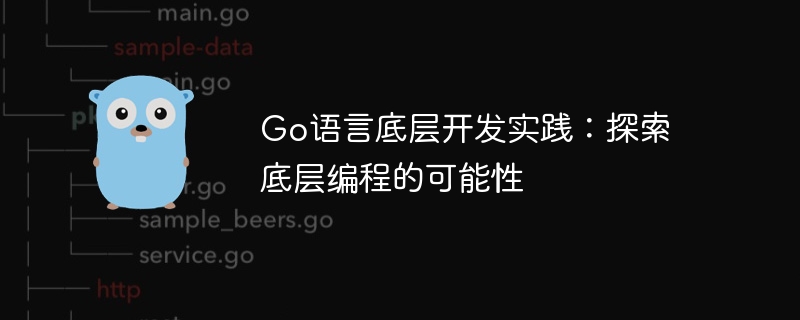

Title: Go language low-level development practice: exploring the possibility of low-level programming
With the rapid development of cloud computing, Internet of Things, big data and other technologies, the need for high-level The requirements for performance and high concurrency are also increasing day by day. In this context, low-level development has become one of the more and more important skills. As a modern programming language, Go language also has broad application prospects in the field of underlying development. This article will explore the practice of low-level development in the Go language and demonstrate its possibilities through specific code examples.
Before carrying out low-level development of Go language, you first need to understand some basic knowledge. The built-in functions and packages of Go language provide rich underlying development functions, such as unsafe package, syscall package, etc. At the same time, pointer operations and memory management of Go language are also important foundations for low-level development.
Low-level network programming is one of the common application scenarios in low-level development. By using the net package and syscall package of the Go language, we can implement network programming based on raw sockets. The following is a simple sample code that implements a simple TCP server:
1 2 3 4 5 6 7 8 9 10 11 12 13 14 15 16 17 18 19 20 21 22 |
|
Through the above code example, we can see how to use the syscall package and raw system calls to implement a simple TCP server, which implements Monitoring and processing of client connections.
In addition to network programming, underlying system programming is also a common application scenario in underlying development. By using the unsafe package and syscall package, we can directly call the interface provided by the system to complete system-level operations. The following is a simple sample code that implements read and write operations on files:
1 2 3 4 5 6 7 8 9 10 11 12 13 14 15 16 17 18 19 20 21 |
|
Through the above code example, we can see how to use the syscall package and unsafe package to implement read and write operations on files. Underlying system-level file operations.
Through the above code examples, we can see that low-level development in Go language is feasible and has great flexibility and possibility. Low-level development allows us to better understand the working principles of computer systems and implement more efficient and flexible programs. Therefore, exploring the possibility of underlying development of the Go language will be of great significance to our technical improvement and career development. I hope this article is helpful to you, thank you for reading!
The above is the detailed content of Go language low-level development practice: exploring the possibilities of low-level programming. For more information, please follow other related articles on the PHP Chinese website!
 Usage of Type keyword in Go
Usage of Type keyword in Go
 How to implement linked list in go
How to implement linked list in go
 What are the Go language programming software?
What are the Go language programming software?
 Zero-based Java self-study tutorial
Zero-based Java self-study tutorial
 How to learn go language from 0 basics
How to learn go language from 0 basics
 What are the methods to implement operator overloading in Go language?
What are the methods to implement operator overloading in Go language?
 What are the operators in Go language?
What are the operators in Go language?
 Can I retrieve a deleted Douyin short video?
Can I retrieve a deleted Douyin short video?




